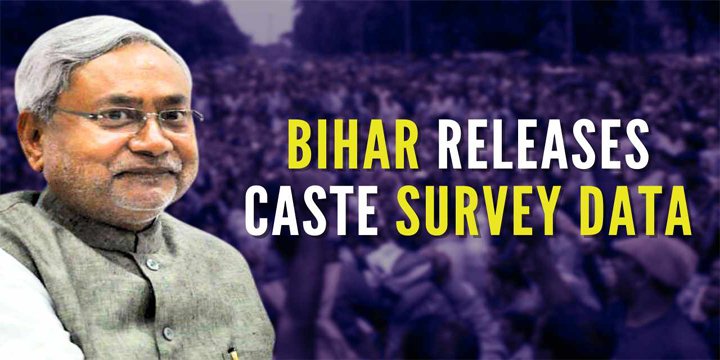Bihar caste survey data out: What it says
Context- Other Backward Classes (OBCs) and Extremely Backward Classes (EBCs) constitute more than 63% of the population of Bihar, according to the findings of the caste survey released by the state government on Monday (October 2).Bihar’s current population, according to the survey, is 13,07,25,310, of which OBCs are 3,54,63,936 (27%) and EBCs are 4,70,80,514 (36%).
What about the forward castes?
The “forward” castes or “General” category is only 15.5% of the population, the survey data, which were released by the state Development Commissioner
(Credits- Indian Express)
The data also shows that there are about 20% (2.6 crore) Scheduled Castes (SCs), and just 1.6% (22 lakh) Scheduled Tribes (STs). The table below (non-exhaustive) shows the percentage-wise breakup of some prominent sub-castes as per Bihar government’s data.
(Credits- Indian Express)
Are the data unexpected?
- The share of the OBC population, in both Bihar and elsewhere, has been widely believed to be much more 27%, which is the quantum of reservation that these castes get in government jobs and admissions to educational institutions.
- The Mandal Commission, which presented its report in 1980, had put the share of the OBC population in the country as a whole at 52%.
- The OBCs have long argued that even with reservations, the so-called forward castes have cornered a disproportionately large share of government jobs in comparison to their population.
What is the political import of this survey?
- The caste survey is a key component of Chief Minister Nitish Kumar’s bid political strategy, not only to stay relevant in state politics but to also play a leading role in the national opposition to the BJP.
- The Chief Minister has woven his politics explicitly around the caste survey since 2022. While issues like the Uniform Civil Code and the inauguration of the Ram Temple in Ayodhya in January next year are likely to play a major role in the BJP’s Lok Sabha campaign, Nitish is likely to use the survey data to give a rallying call for “social justice” and “development with justice”.
- The process of carrying out a caste survey in Bihar has found support from all political parties, including the Bihar BJP. The state unit of the BJP has repeatedly backed the proposals to conduct the caste survey.
How did the survey come about?
- On June 1, 2022, after an all-party meeting, Nitish Kumar announced that “all nine parties (including the Bihar BJP unit) unanimously decided to go ahead with the caste census.”
- The next day, the state’s Council of Ministers approved the proposal to conduct the survey, using Bihar’s own resources and Rs 500 crore from its contingency fund for the exercise.
- The survey’s first phase, which involved counting the total number of households in Bihar, began on January 7 and ended on January 21. The second and final phase kickstarted on April 15 to collect data on people from all castes, religions and economic backgrounds, among other aspects like the number of family members living in and outside the state.
- The new phase was slated to wrap up on May 15 but it was stopped mid-way after the Patna High Court put a stay on it, saying the state government wasn’t competent to carry out the survey. Subsequently, the Bihar government approached the Supreme Court, seeking a stay on the order.
- A huge relief came for the state government on August 1, when the High Court ultimately said the survey was “perfectly valid”. The next day, the caste survey resumed. On August 25, Nitish said the survey had concluded.
Conclusion- The caste survey has highlighted the share of different castes in Bihar based on population . Going forward inclusive development should guide the policy framework.
Syllabus- GS-1; Population
Source- Indian Express






